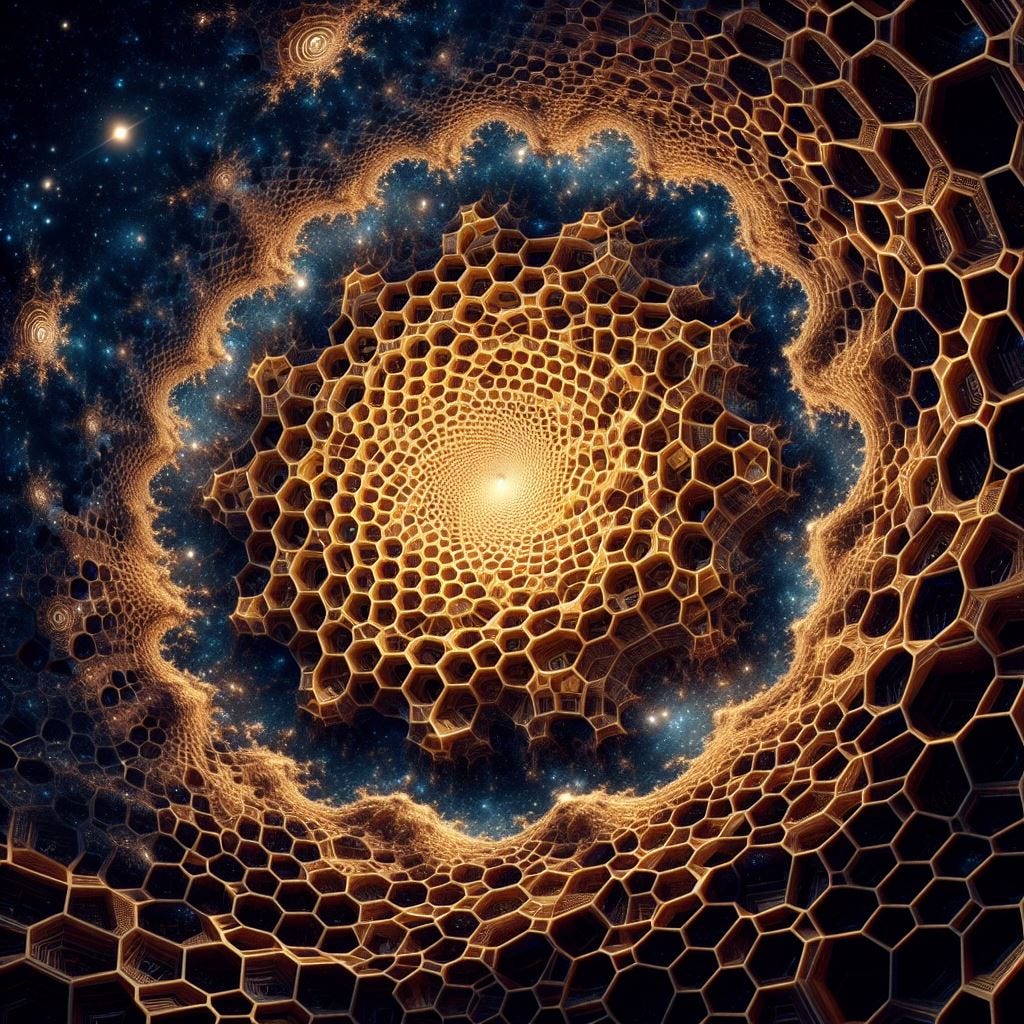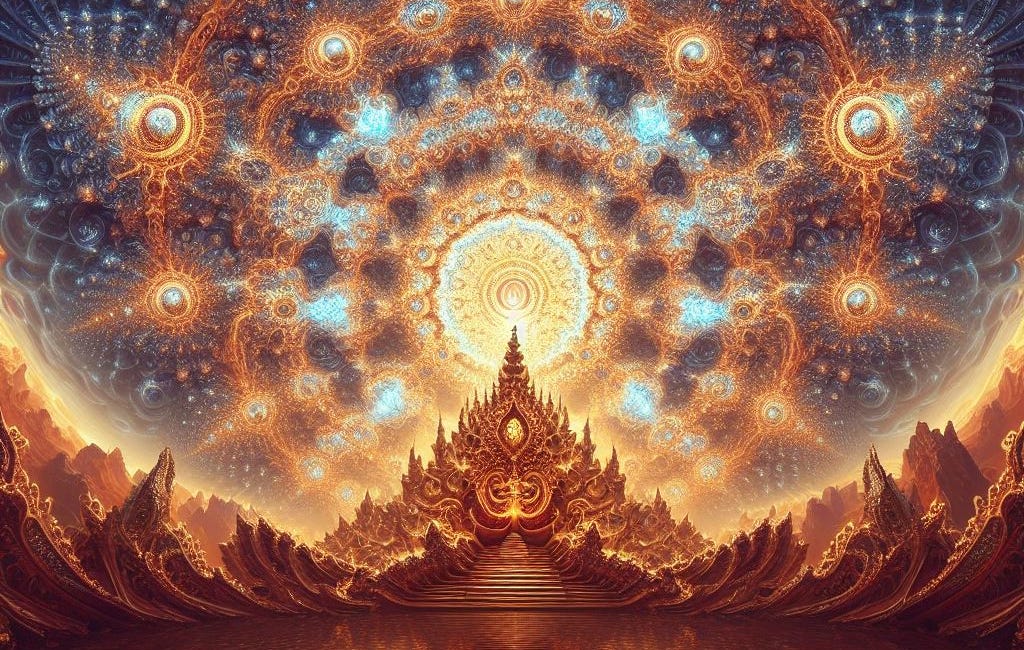The Beehive as a Fractal Mirror of Creation. Inspiration from the Amṛtabindu Upanishad.
"Like a reflecting polyhedron, the Self infinitely multiplies its faces while remaining One."
📢 **Exciting News: Elevate Your Experience with Premium Benefits!**
Now, I'm thrilled to unveil an exciting development—we're introducing premium paid subscriptions to Vedanta Substack! By becoming a paid subscriber, you not only enhance your experience but also play a crucial role in supporting the continuation of our exploration.
Vedanta Substack is a reader-supported publication. To receive new posts and support my work, consider becoming a free or paid subscriber.
🔓 **Unlock Exclusive Benefits as a Paid Subscriber**
As a paid subscriber, you'll enjoy a range of exclusive benefits:
- Access to in-depth posts with special recommendations for further study.
- Personal invitations to exclusive chats or podcast interviews on captivating topics, featuring multiple thinkers simultaneously.
- The opportunity to propose the publication of your articles and essays on Vedanta Substack.
- Invitations to Vedanta retreats and events offering a deeper exploration of spiritual and philosophical realms.
Image by Author
The social organization of the bees inside a beehive has always been a source of inspiration and wonder for man. But perhaps there is something even deeper that we can learn by observing the tireless work of these insects. The inner structure of a beehive, constituted by the intricate hexagonal interweaving of the honeycombs, seems to reflect in small the very structure of the universe. The honeycombs can be seen as a fractal projection of the complex architecture of the cosmos, governed by precise mathematical and geometric principles.
Enlarging or shrinking a section of the honeycombs, we find again and again the same hexagonal structure, just as it happens in fractal figures where every part contains the whole. It is a bit like observing the universe on increasingly larger or smaller scales: galaxies containing galaxies, or particles containing entire universes. Perhaps the bees, in building these admirable structures, are somehow attuned to the deep geometry of creation and succeed in reflecting its harmony and perfection in their engineering work. Who knows if the honeycombs are a way for these tireless insects to worship the cosmic intellect that governs everything?
Fractals of the Infinite: Exploring Resonances Between Vedantic Wisdom and Fractal Cosmology.
📢 **Exciting News: Elevate Your Experience with Premium Benefits!** Now, I'm thrilled to unveil an exciting development—we're introducing premium paid subscriptions to Vedanta Substack! By becoming a paid subscriber, you not only enhance your experience but also play a crucial role in supporting the continuation of our exploration.
If so, we humans would also have much to learn from the example of bees. We should perhaps return to observing nature as a reflection of the divine, rediscovering the profound bond that unites us with the rest of creation. And learn humility in recognizing how, in our small way, we too are part of this grand universal design.
"Like a reflecting polyhedron, the Self infinitely multiplies its faces while remaining One."
Amṛtabindu Upanishad
"The infinite is curved upon itself, its distant points touch each other reflected in a curved mirror."
Atharvashiras Upanishad
"Worlds nest within each other like the facets of a crystal multiplying itself infinitely through reflections."
Bhāvana Upanishad
I have woven tales to share, for any who care to read them. My books await you on Google Books. Check also my stories on Medium.com.
I would be honoured if you considered subscribing to the Premium Contents of my Vedanta Substack and leaving feedback, comments, and suggestions both on this page and by writing to me at cosmicdancerpodcast@gmail.com.
Thank you for your precious attention.





